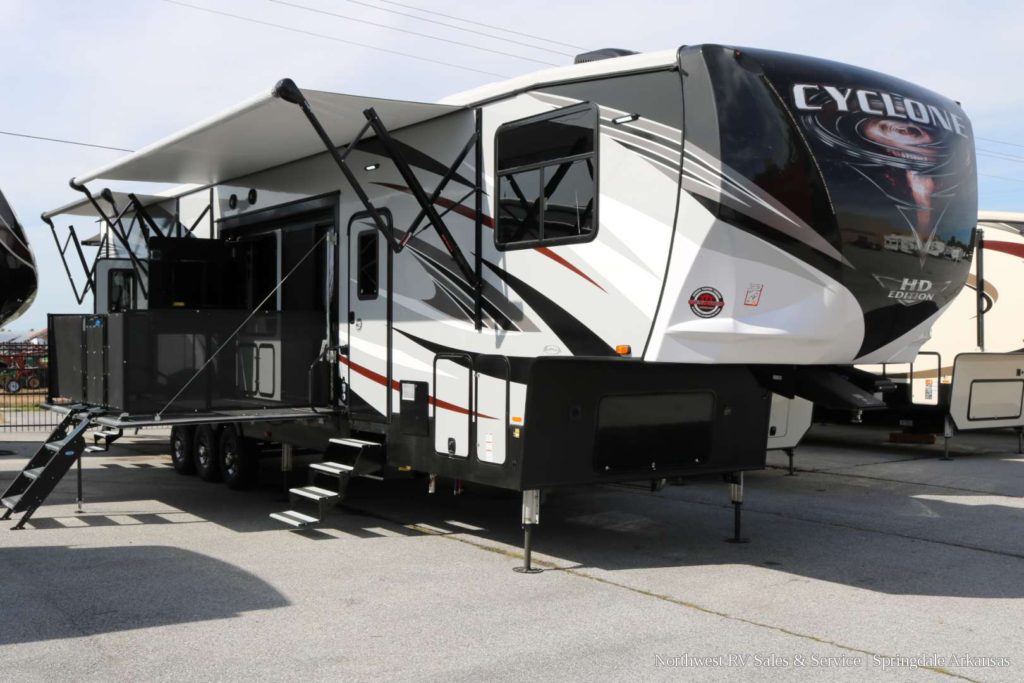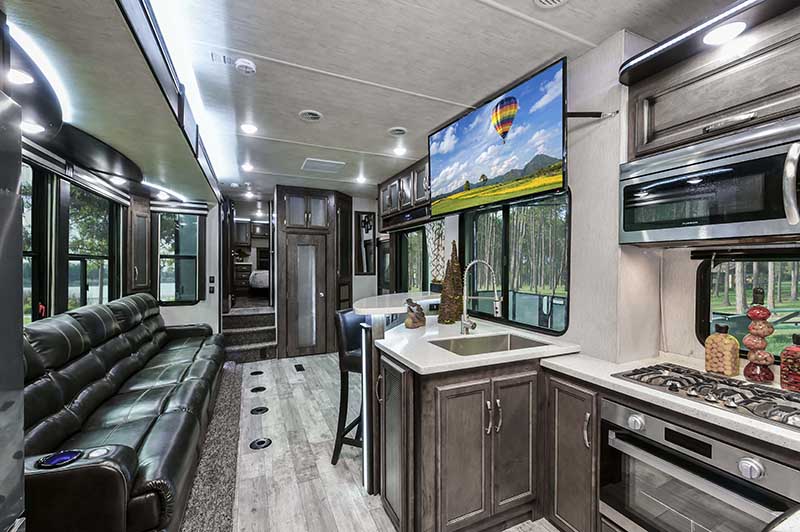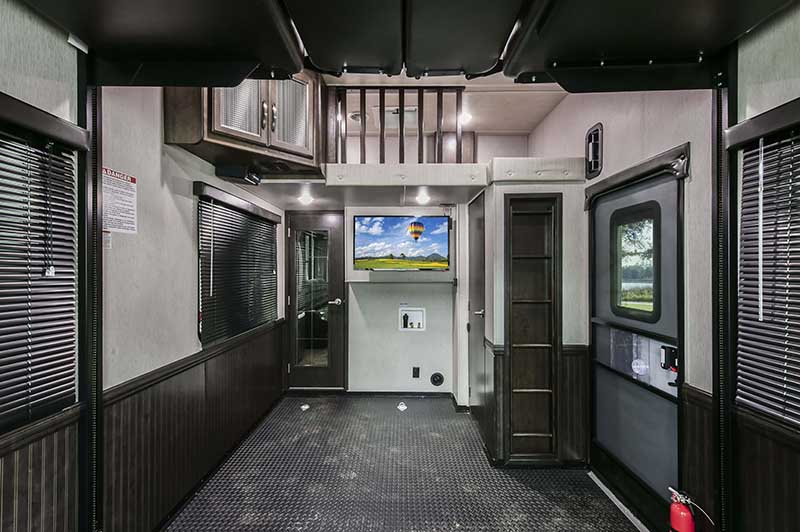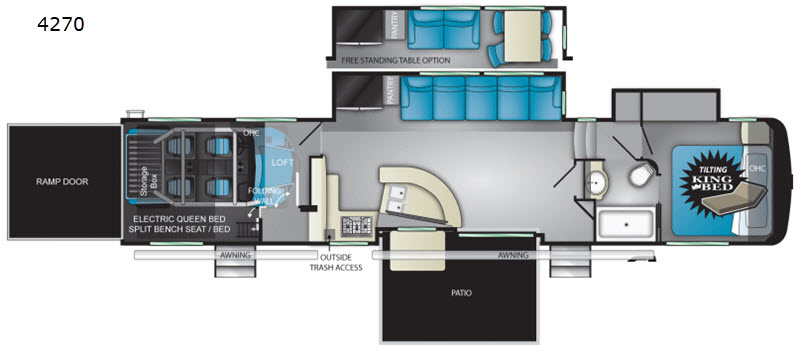As we spoke about in a recent post, there are many different types of RV available for a large variety of individual preferences. Many of you are like us – we are buying the whole package – motorhome, truck, trailer, extra car, etc. If this is your plan, I HIGHLY advise you settle on the make and model of trailer FIRST. This will help ensure you buy “enough” truck while avoiding buying a tow-behind that is too heavy or a truck that is overkill for the workload. Don’t worry, you can always change your mind, but deciding in this order will make the process easier down the road – pun intended.
In light of my job (I flying for a major airline), we had a rather unique requirement of going to the closest airport once a week, being gone for several days and then returning to drive back to our “home.” Our options quickly began to slim as we considered one important question: do we need two vehicles along with us or can we get by with just one? Based on our three children, and my wife’s love for not getting out of bed earlier than 9am if at all possible, the answer was a BIG “yes!”
The Class A and Class C dilemma
With a Class A and Class Cs you can pull a car behind the RV. For those of you considering this option, pay special attention to the tow-able weights on your specific make and model; there is a large variation with them and often it is hugely affected by being gasoline or diesel powered. Bringing a second car behind is incredibly convenient as you have transportation with you for small trips like the grocery store, the museum, sight seeing, and the family favorite – late night ice cream! For us, though, this meant that while I was traveling, Kristin and the kids would be left with just the Class A or C to do an driving around. Given the hassle tearing down camp and resetting up camp alone, these options were quickly out. Some might say “couldn’t your wife drop you off and pick you up from the airport?” This might be workable for some families but, given the often early times of the flight, paired with the possibility of an hour to two hour drive to the airport, this would drastically lower satisfaction on a weekly basis.
The fifth wheel option
With the “motorhomes” out of the picture we turned to fifth wheels and fifth wheel toy haulers. Kristin loved the “homey” feel of the fifth wheels with many of them having option kitchens, islands, multiple couches for movie nights, washer and dryers and outdoor kitchens. However, as we considered our unique requirements of two vehicles, the fifth wheel option became less desirable. Now, I will say, it is possible to tow a car behind a fifth wheel (at least in some states). However, the complexity and varied legalities with tow-ability and maximum length led us to abandon this idea.
Finally, we have arrived at the sole remaining option – the fifth wheel toy hauler. Although the standard floor plan of a “toy hauler” does not immediately incite warm and cozy feelings, we were quickly surprised by the different possibilities and variations within the type. With lots of research, and many hours spent on RV manufacturer’s and dealer’s websites, we were able to narrow the list to just a handful of options.
Our shortlist
Narrowing the search down to specifics “musts” as well as “wants” and “can go withouts” was extremely helpful to developing a shortlist. I will note, that a side patio quickly became a must for our family. With the amount of time we enjoy eating and sitting outdoors as a family (in addition to the time Kristin and I enjoy unwinding after the kids are in bed), we felt that a side patio was a feature that would greatly enhance our experience on the road. In the end, based on our VERY individualized needs, we loved the following:
- Heartland – Road Warrior 4275
- Keystone – Fuzion 424
- Forrest River – XLR Thunderbolt 422AMP
- Heartland – Cyclone 4270
Now, here is the tricky part – we don’t ever commit to something with this much affect on our life and expensive as these trailers without first stepping foot in them. The way RV dealers work, is they have certain restrictions on which dealers can and cannot sell which brands within a certain radius of each other. The specifics don’t really matter, what matters is that you often cannot drive down to your local dealership and expect to see most or all of the ones your like. What this meant is often driving, sometimes close to two hours, to see each make and model that is on your “shortlist.” This takes planning, patience, commitment, but most importantly – time. It is very difficult to find the “right” trailer if you are on a time crunch. We planned to have our make and model decided by no later than 9 months from our planned purchase date.
The winner!
After all of our visits and lots more research and discussion, the Cyclone 4270 by Heartland was the winner! (Followed closely by the Road Warrior 4275). We are extremely excited for the next step. We have done lots of research on pricing, as well as set up a search on the RV listing websites (such as RVtrader.com) to send us an email to alert of a new listing that matches our criteria. I would highly suggest doing this for 3 or more months prior to purchase. This simple automated feature will help you establish what the “expected” or “best” price will be once it is time to purchase the trailer. Also, don’t be afraid to look out of state; driving 6 hours to pay $10,000 less works out to a pretty highly hourly wage!




